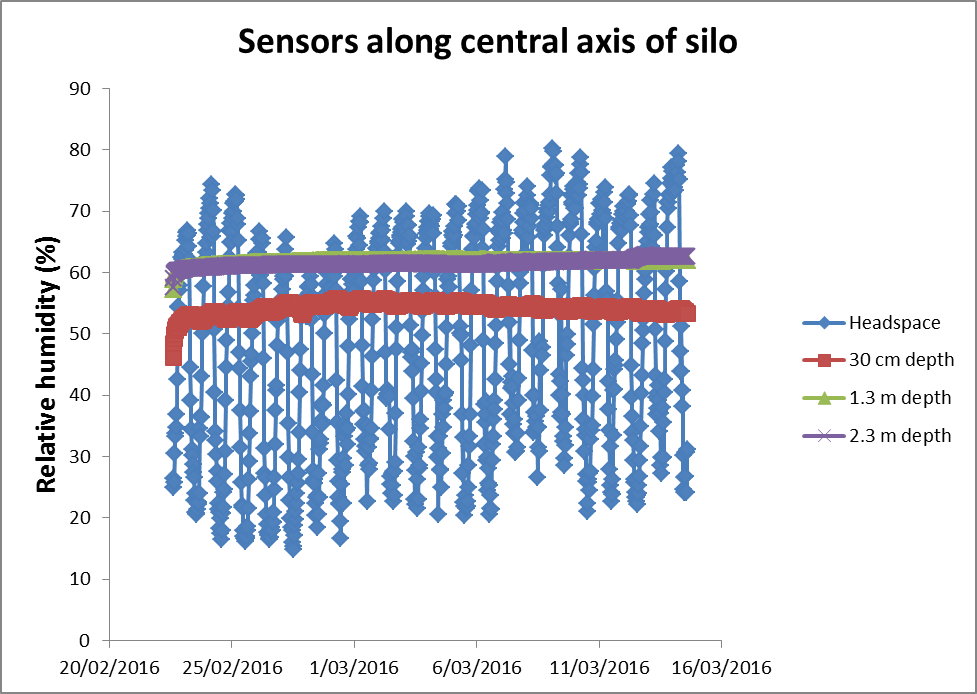Finding storage pests early
Finding storage pests early
Author: Greg Daglish, Queensland Department of Agriculture and Fisheries | Date: 22 Jun 2016
Take home message
- A pilot study in southern Queensland demonstrated that combining the use of probe traps in the top of a silo with sieving a grain sample from the bottom was an effective insect detection method.
- Probe traps inserted into the grain surface tended to catch more beetles than traps inserted deeper.
- Probe traps inserted into the grain peak via the silo centre top hatch tended to catch more beetles than traps inserted via the roof side hatch.
- Check traps after 1 day initially to avoid clogging if there is a heavy infestation, and less frequently thereafter (e.g. monthly) if few or no beetles are detected.
- Further research is needed examining the relative effectiveness of sieving and trapping for detecting different species, and how serious the situation is when beetles are first detected.
Background
Options for farmers to detect insects in stored grain were explored in a pilot study in 2016 on two farms in southern Queensland. Increasing on-farm storage comes with an increasing risk of insect infestation. There is an urgent need for appropriate sampling methods to help farmers manage this risk and minimize marketing delays. Simple, safe, cost effective and easy to interpret sampling options will enable growers to make informed decisions about pest management.
Silos containing wheat or barley were sampled for stored grain beetles using two methods (Figure 1):
- Sieving of grain samples taken from the top and bottom of the silo
- Captured in probe traps inserted into the grain via the side and top hatches
The bottom grain (2 L) sample was collected by dropping grain from the bottom of the silo. The top grain sample (4 L) was a composite of two samples scooped from the grain surface, i.e. one sample (2 L) scooped from the top hatch and a second sample (2 L) scooped from the side hatch.
Probe traps were inserted into the grain via the top and side hatches. In each case, one trap was inserted to trap beetles 0-28 cm from the grain surface (shallow trap) and the second trap was inserted so that it trapped beetles 28-56 cm from the grain surface (deep trap).
Research results
In this pilot study, stored grain beetles were detected in grain samples and probe traps.
In silos in which beetles were detected in sieved grain samples, the bottom and top grain samples yielded on average 78 and 20% of the beetles respectively (Figure 2). This was despite the top sample having twice as much grain as the bottom sample.
In silos in which beetles were detected in the probe traps, the shallow and deep traps captured on average 82 and 18% of the beetles respectively (Figure 3).
In silos in which beetles were detected in the probe traps, the traps inserted via the side and top hatches captured on average 24 and 76% of the beetles respectively (Figure 4).
It is possible that the usefulness of sampling and trapping may vary between pest species, but it is not possible to confirm this at this stage.
In several heavily infested silos some probe traps captured many thousands of Tribolium castaneum (red flour beetle) beetles resulting in traps becoming congested.
Automatic loggers were used to monitor temperature and humidity in some silos (e.g. Figures 5 and 6). Temperature and humidity varied widely in the headspace reaching potentially lethal levels in the middle of the day. In contrast, temperature and humidity was much more stable in the grain bulk. Beetles are likely to avoid the grain surface during this time of extreme high temperature and low humidity, potentially impacting on the usefulness of visual inspection for beetles on the grain surface.
Preliminary recommendations
There are many beetle species that can infest stored grain and at least five pest species were detected in this study. From a scientific perspective, knowing the identity and exact numbers of beetles in grain samples or probe traps is valuable. From a grower perspective, however, the presence of any beetles in stored grain is a problem.
This pilot study focussed on two simple methods that could be used by growers to detect pests in stored grain, and the following recommendations are based on the results.
- Sieving of grain samples and using probe traps in the top of the grain bulk is useful.
- If sieving grain is to be limited to one location, then a sample from the bottom of the silo is preferable to one from the top of the silo.
- Probe traps should be inserted into the grain bulk so that the top of the trap is level with the grain surface.
- If trapping is to be limited to one location then inserting the probe trap into the grain through the top hatch is preferable to inserting it through the upper side hatch.
- Initially, probe traps should be inspected after 1 day in case there is a heavy infestation, with the risk of large numbers of beetles clogging the traps. If no or few beetles are trapped in the first instance longer trapping period can be used.
- Extremely high temperature and low humidity is possible during the middle of the day, so early morning may be the best time for visual inspection of the grain surface for beetles.
Unanswered questions
- Are the results of this pilot study applicable more broadly?
- What does it mean if I get one beetle or many beetles in my sieved sample or my probe trap? And is the answer the same soon after harvest or later during storage?
- Do different pest species tend to be in different parts of the grain bulk, and how does this affect detection through sampling or trapping?
Acknowledgements
This pilot study was made possible through an Agri-Science Queensland Innovation Opportunity award from DAF entitled ‘Sampling options for farmers to detect insects in stored grain’. I am very grateful to two grain growers and their families for allowing me access to their properties and my DAF colleagues Philip Burrill and Valerie Byrne.
Contact details
Greg Daglish
Queensland Department of Agriculture and Fisheries
EcoSciences Precinct, Dutton Park
Ph: 07 3255 4438
Email: greg.daglish@daf.qld.gov.au
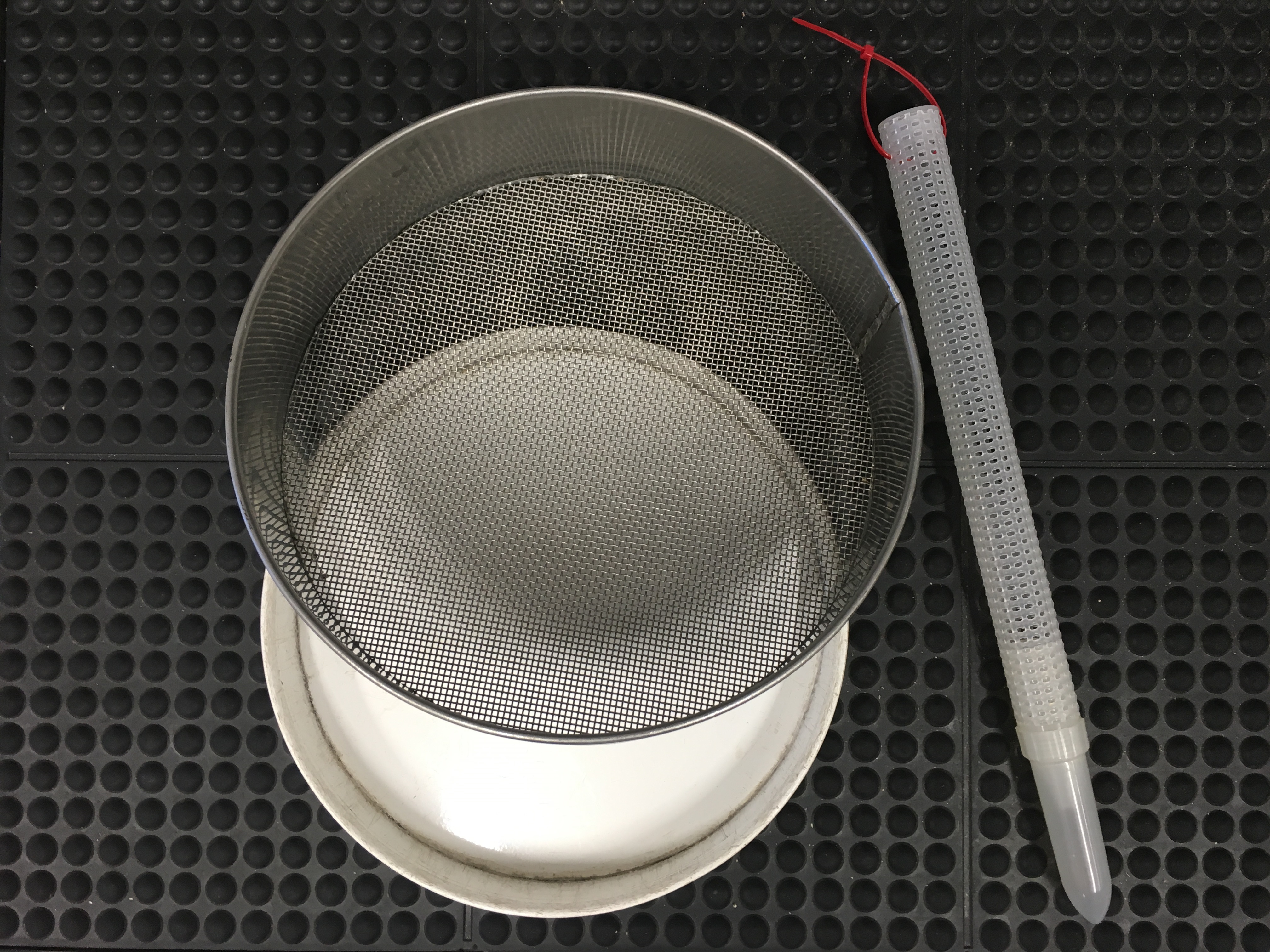
Figure 1. Grain sieve and probe trap used for detecting insect pests in farm silos.
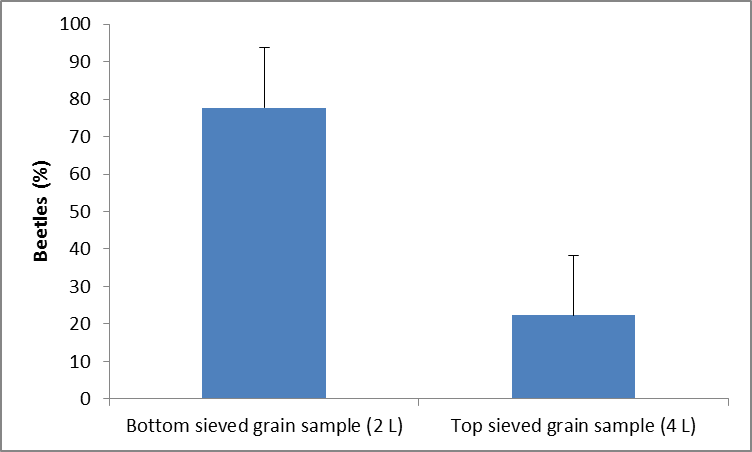
Figure 2. When grain beetles were detected in grain samples then more beetles tended to be detected in the bottom sample than the top sample.
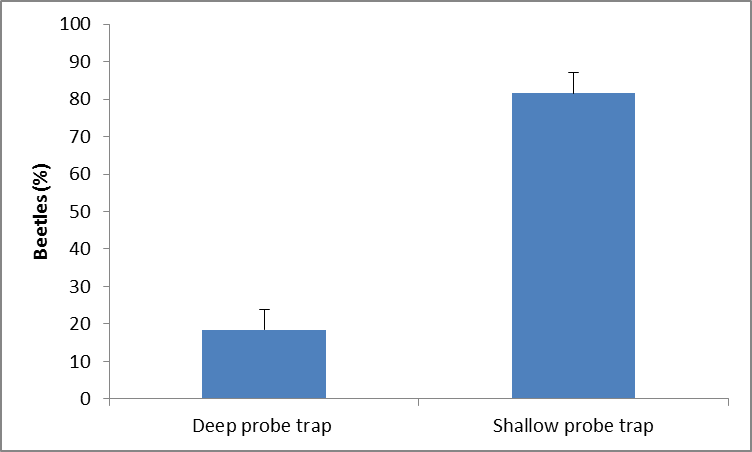
Figure 3. When beetles were detected in probe traps then traps inserted near the grain surface tended to catch more beetles than traps inserted deeper.

Figure 4. When beetles were detected in probe traps then traps inserted via the top hatch tended to catch more beetles than traps inserted via the side hatch.
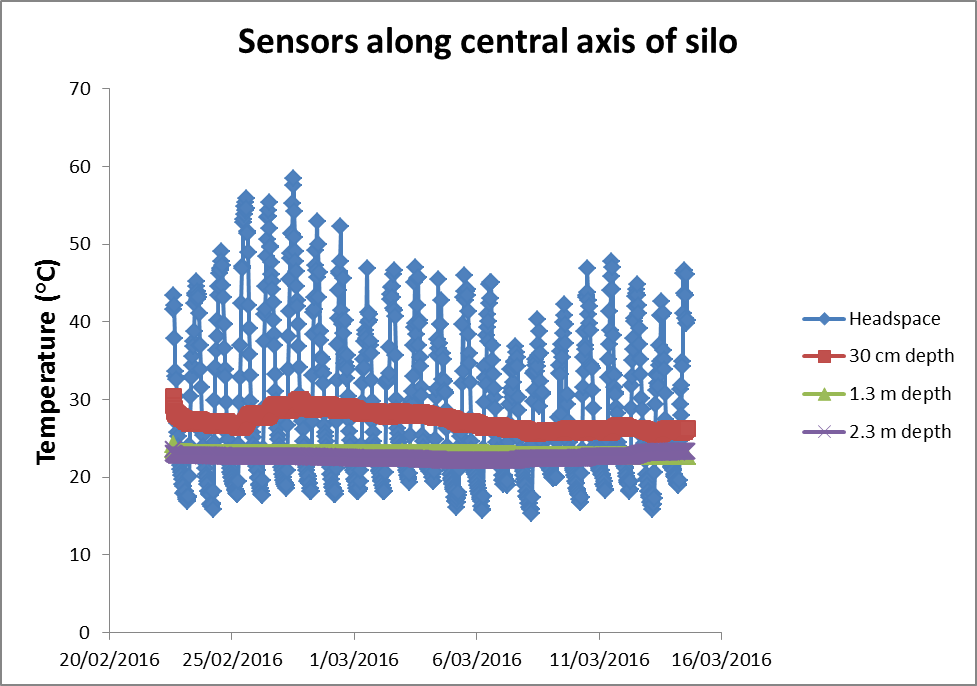
Figure 5. Temperature measured half-hourly in the headspace and grain bulk in a silo containing barley.
